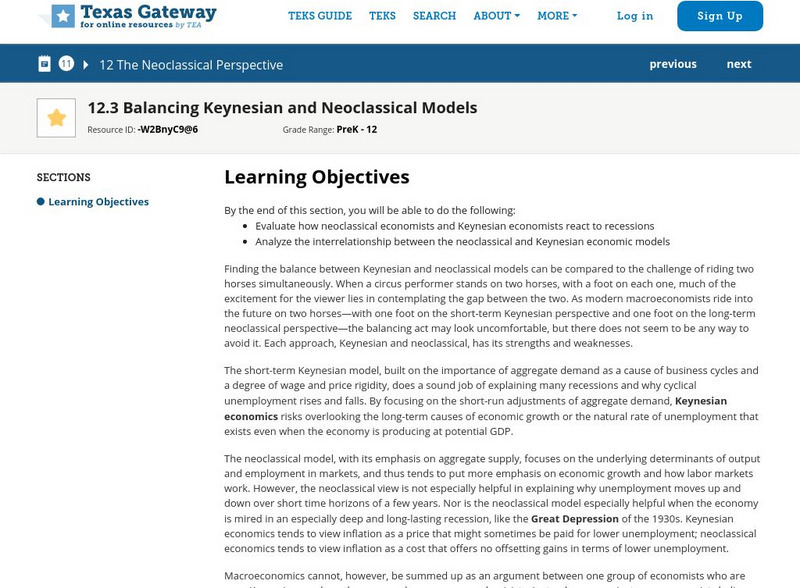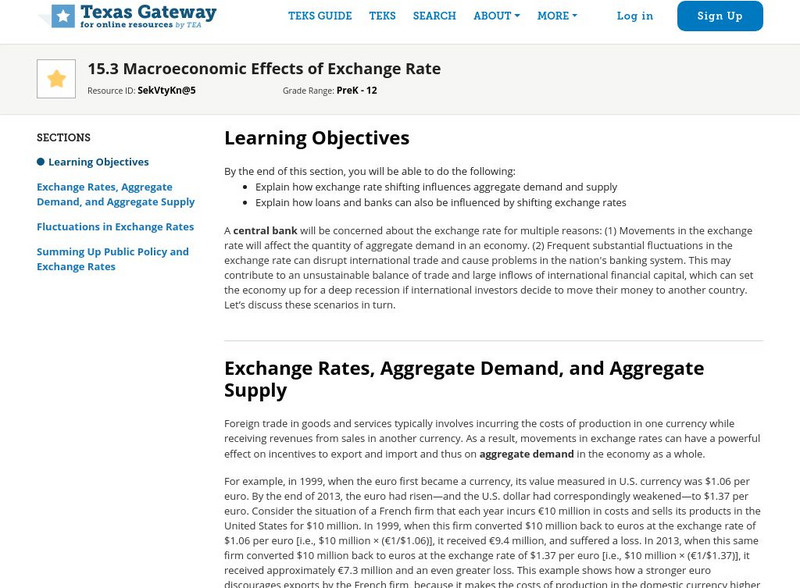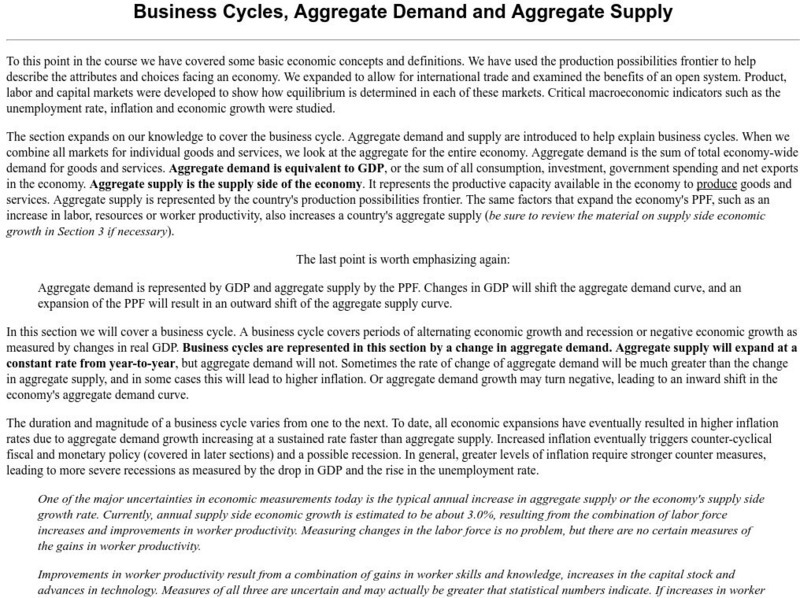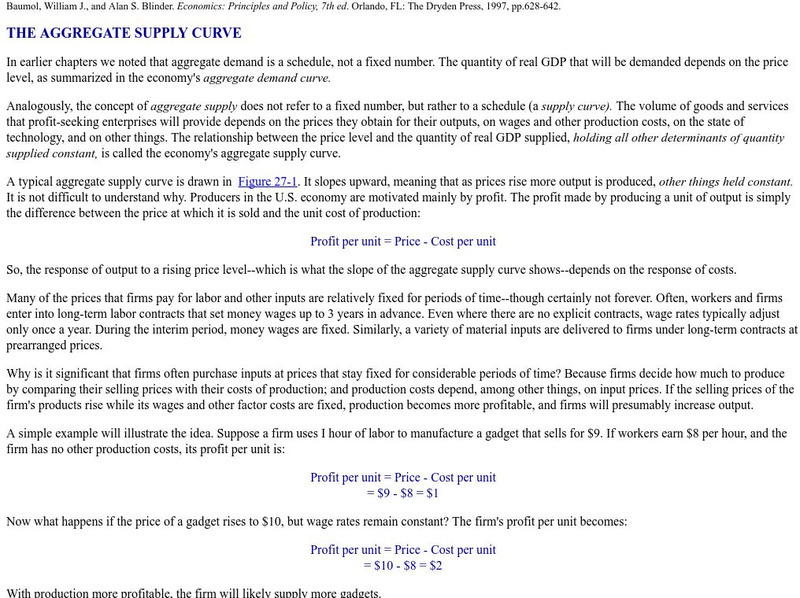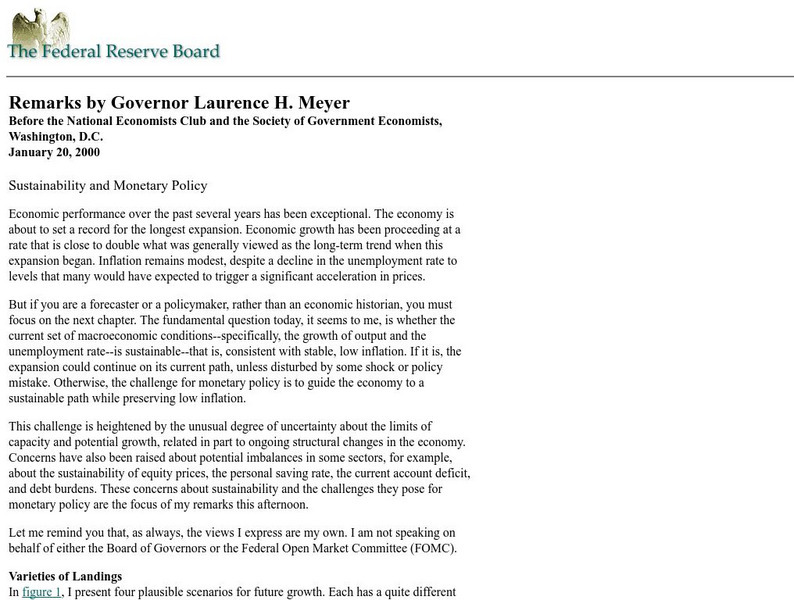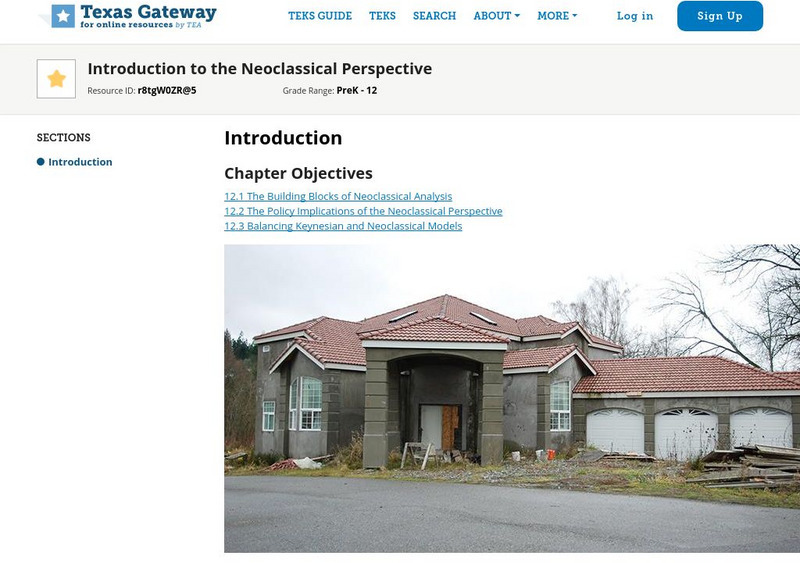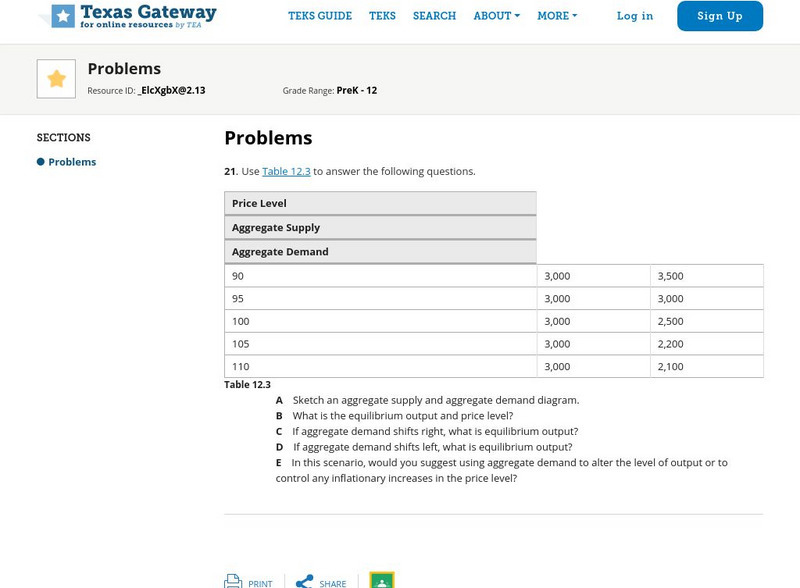Khan Academy
Khan Academy: The Aggregate Demand Aggregate Supply (Ad As) Model
This study resource will help students understand, and create, graphs that are critical skills in macroeconomics. This article reviews the aggregate demand-aggregate supply (AD-AS) model.This resource is designed as a review for the AP...
Khan Academy
Khan Academy: Shifts in Aggregate Demand
Aggregate demand is made up of four components: consumption spending, investment spending, government spending, and spending on exports minus imports. Increasing or decreasing any of these components create shifts the AD curve.
Khan Academy
Khan Academy: Interpreting the Aggregate Demand/aggregate Supply Model
In order for a macroeconomic model to be useful, it needs to show what determines total supply or total demand for the economy and how total demand and total supply interact at the macroeconomic level. This model is called the aggregate...
Texas Education Agency
Texas Gateway: Ch. 10: Aggregate Demand/supply Model: Key Terms
This is a list of terms and definitions used in Chapter 10: The Aggregate Demand/Aggregate Supply Model.
Texas Education Agency
Texas Gateway: 10: Keynes' Law and Say's Law in Aggregate Demand/supply Model
By the end of this section, you will be able to do the following: Identify the neoclassical zone, the intermediate zone, and the Keynesian zone in the AD/AS model and Use an AD/AS model as a diagnostic test to understand the current...
Texas Education Agency
Texas Gateway: Ch. 10: Aggregate Demand/supply Model: Key Concepts and Summary
This section summarizes each of the key concepts from Chapter 10: The Aggregate Demand/Aggregate Supply Model.
Texas Education Agency
Texas Gateway: Chapter 12: The Building Blocks of Neoclassical Analysis
By the end of this section, you will be able to do the following: Explain the importance of potential GDP in the long run, analyze the role of flexible prices, interpret a neoclassical model of aggregate demand and aggregate supply, and...
Khan Academy
Khan Academy: Long Run Self Adjustment in the Ad as Model
Practice what you've learned about the long-run adjustment of output, employment, and prices to changes in aggregate demand and short-run aggregate supply in this exercise.
Texas Education Agency
Texas Gateway: Chapter 12: Balancing Keynesian and Neoclassical Models
By the end of this section, you will be able to do the following: Evaluate how neoclassical economists and Keynesian economists react to recessions and Analyze the interrelationship between the neoclassical and Keynesian economic models.
Texas Education Agency
Texas Gateway: Ch. 15: Macroeconomic Effects of Exchange Rate
By the end of this section, you will be able to do the following: Explain how exchange rate shifting influences aggregate demand and supply and Explain how loans and banks can also be influenced by shifting exchange rates.
Khan Academy
Khan Academy: Shifts in Aggregate Supply
If either the aggregate supply or aggregate demand curve shifts in the aggregate demand/aggregate supply-AD/A-model, the original equilibrium in the AD/AS diagram will shift to a new equilibrium. Increases and decreased in the price of...
Khan Academy
Khan Academy: How the Ad/as Model Incorporates Growth, Unemployment, Inflation
The aggregate demand/aggregate supply, or AD/AS, model is one of the fundamental tools in economics because it provides an overall framework for bringing economic factors together in one diagram. These factors include economic growth,...
University of Colorado
University of Colorado: Aggregate Supply and Demand
This site is a short lesson on business cycles, aggregate demand, and aggregate supply. It has some good explanations of the terms.
Texas Education Agency
Texas Gateway: Ch. 12: The Policy Implications of the Neoclassical Perspective
By the end of this section, you will be able to do the following: Discuss why and how inflation expectations are measured, Analyze the impacts of fiscal policy and monetary policy on aggregate supply and aggregate demand. Explain the...
Khan Academy
Khan Academy: Changes in the Ad as Model in the Short Run
Practice what you've learned about the AD-AS model, aggregate demand shocks, and short-run aggregate supply shocks in this four-problem exercise.
Khan Academy
Khan Academy: Keynes' Law and Say's Law in the Ad/as Model
Compare Keynes's and Say's law in the context of aggregate supply and demand.
Other
The Aggregate Supply Curve
"The Aggregate Supply Curve," by Baumol, William J., and Alan S. Blinder. Economics: Principles and Policy, 7th ed. Orlando, FL: The Dryden Press, 1997, pp.628-642.
The Federal Reserve System
Federal Reserve Board: Sustainability and Monetary Policy
"Sustainability and Monetary Policy," Remarks by Governor Laurence H. Meyer before the National Economists Club and the Society of Government Economists, Washington, D.C., January 20, 2000. With links to graphics files in PDF format.
Khan Academy
Khan Academy: Lesson Summary: Changes in the Ad as Model in the Short Run
In this lesson summary review and remind yourself of the key terms and graphs related to changes in the AD-AS model. Topics include AD shocks, such as changes in consumption, investment, government spending, or net exports, and supply...
Tutor2u
Tutor2u: Macroeconomic Equilibrium
A definition of macroeconomic equilibrium and how it changes when either aggregate supply (AS) or aggregate demand (AD) shift. Many supporting graphs are provided to help explain this concept.
Texas Education Agency
Texas Gateway: Chapter 12: Neoclassical Perspective: Key Concepts and Summary
This section summarizes the key concepts presented in Chapter 12: Neoclassical Perspective from the Texas Gateway AP Macroeconomics online text.
Texas Education Agency
Texas Gateway: Chapter 12: Introduction to the Neoclassical Perspective
In this chapter, you will learn about the following: The building blocks of neoclassical analysis, The policy implications of the neoclassical perspective, and Balancing Keynesian and Neoclassical models.
Texas Education Agency
Texas Gateway: Chapter 12: Neoclassical Perspective: Problems
This section provides 5 problems to solve pertaining to the information presented in Chapter 12: Neoclassical Perspective.
Khan Academy
Khan Academy: The Building Blocks of Keynesian Analysis
Keynesian economics focuses on explaining why recessions and depressions occur and offering a policy prescription for minimizing their effects. The Keynesian view of recession is based on two key building blocks: recessions occur when...








